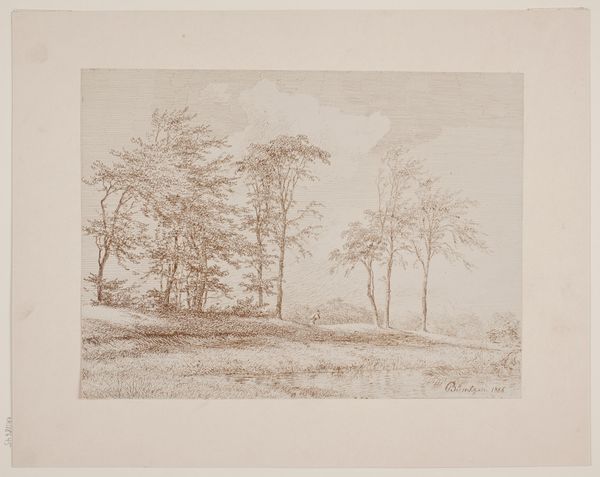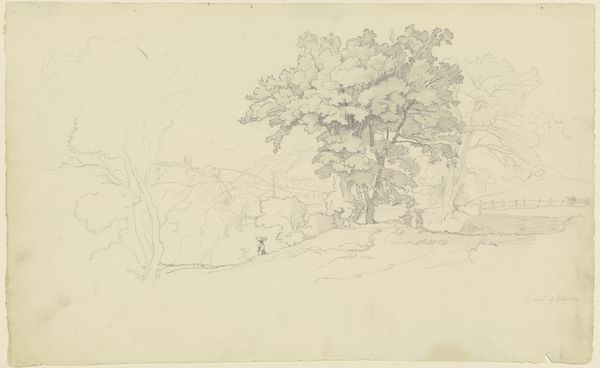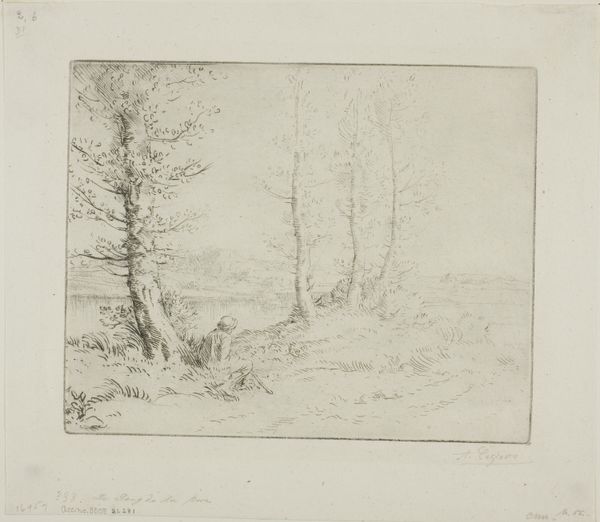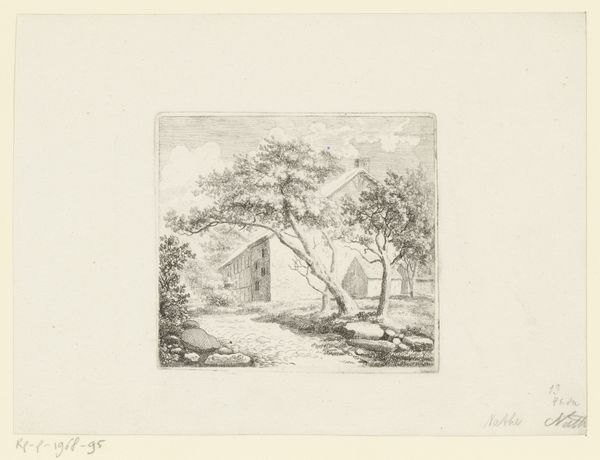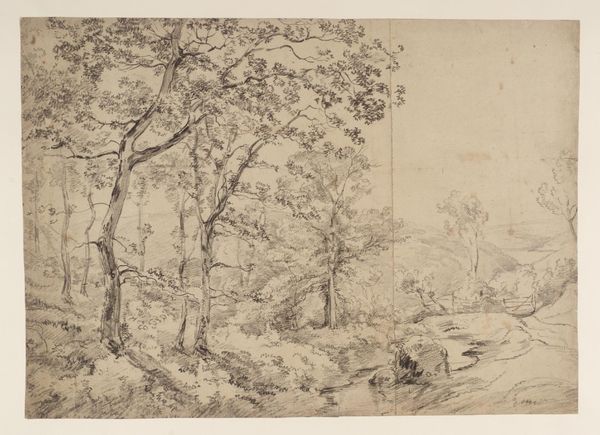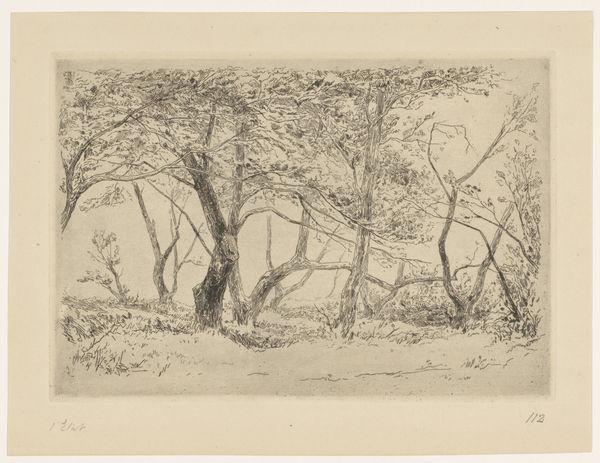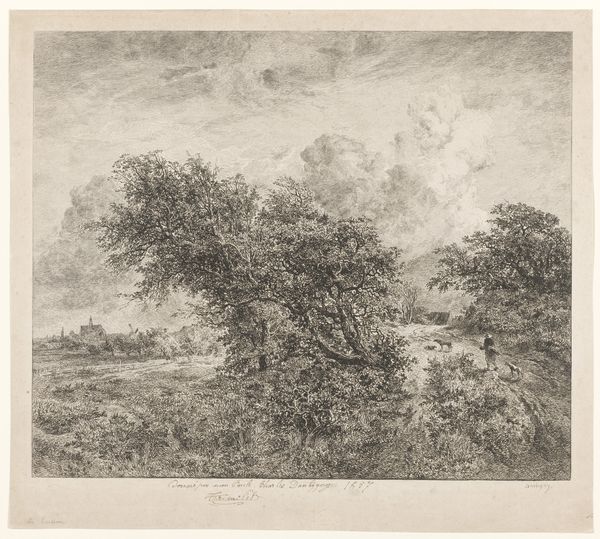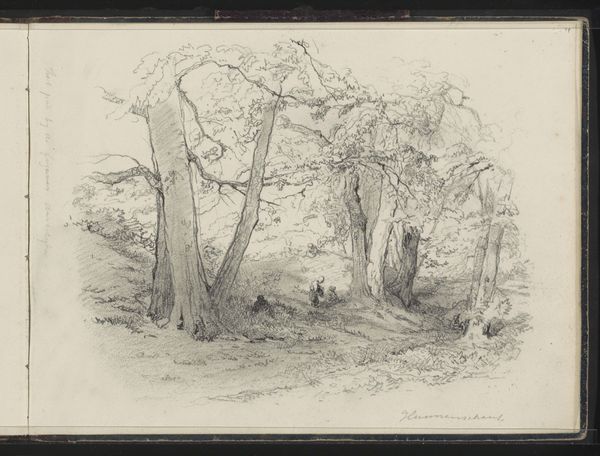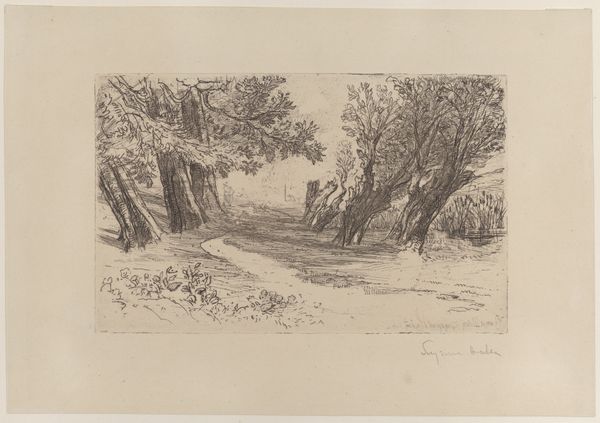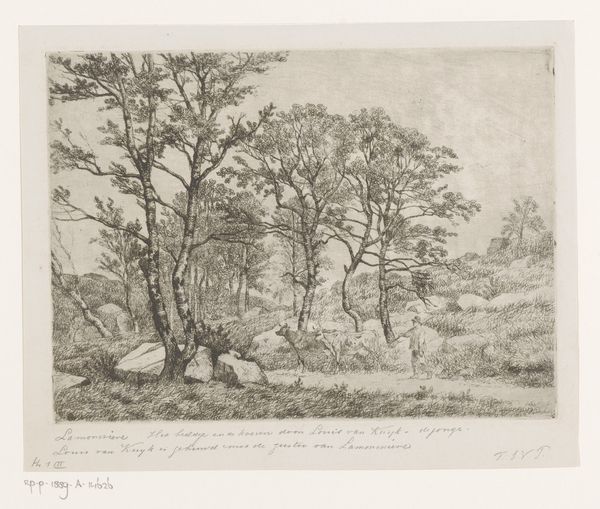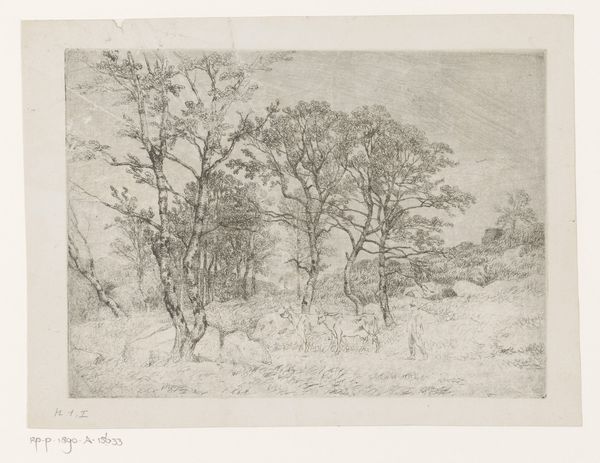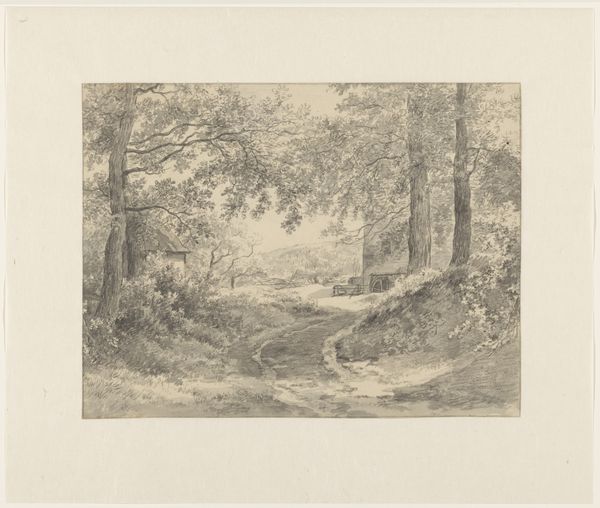
Dimensions: 180 mm (height) x 255 mm (width) (plademaal)
Editor: Here we have "Parti i Sorgenfri," a landscape etching by Axel Schovelin from 1851. It’s a beautifully detailed scene, and the texture he achieves with just lines is remarkable. It almost feels like a photograph, yet distinctly rendered by hand. What do you notice about its composition and technique? Curator: The fineness of line is certainly key here. Observe how the artist manipulates density and direction of these lines. Where are they most concentrated, creating the darkest tones and suggesting depth? Notice how the artist achieves a tonal range through variations in line thickness and spacing. Consider, then, how these formal elements evoke the feeling of a real place, and suggest form. Editor: It's true; the shading around the trees on the right really brings them forward, almost as if they are on a stage. The lighter touch in the background makes the clearing appear more distant. But why use etching in the first place for such a landscape? Curator: The etching technique, with its capacity for intricate detail, perfectly suits Schovelin’s interest in capturing the subtle textures of the natural world. Etching also lends itself to atmospheric effects. Do you see how the fine lines create a sense of shimmering light filtering through the trees? It captures a specific moment in time. Editor: Now that you point it out, I see the atmosphere and light a lot more. It makes me appreciate how important medium can be to the success of a piece. Curator: Precisely. Schovelin has masterfully used the inherent qualities of etching to define space and evoke the mood. Reflecting on Schovelin’s composition has shown me how effectively texture and line create this detailed scene. Editor: This was a great observation exercise. I never noticed how much could be conveyed just by the artist’s choice of line and tone. Thanks!
Comments
No comments
Be the first to comment and join the conversation on the ultimate creative platform.
